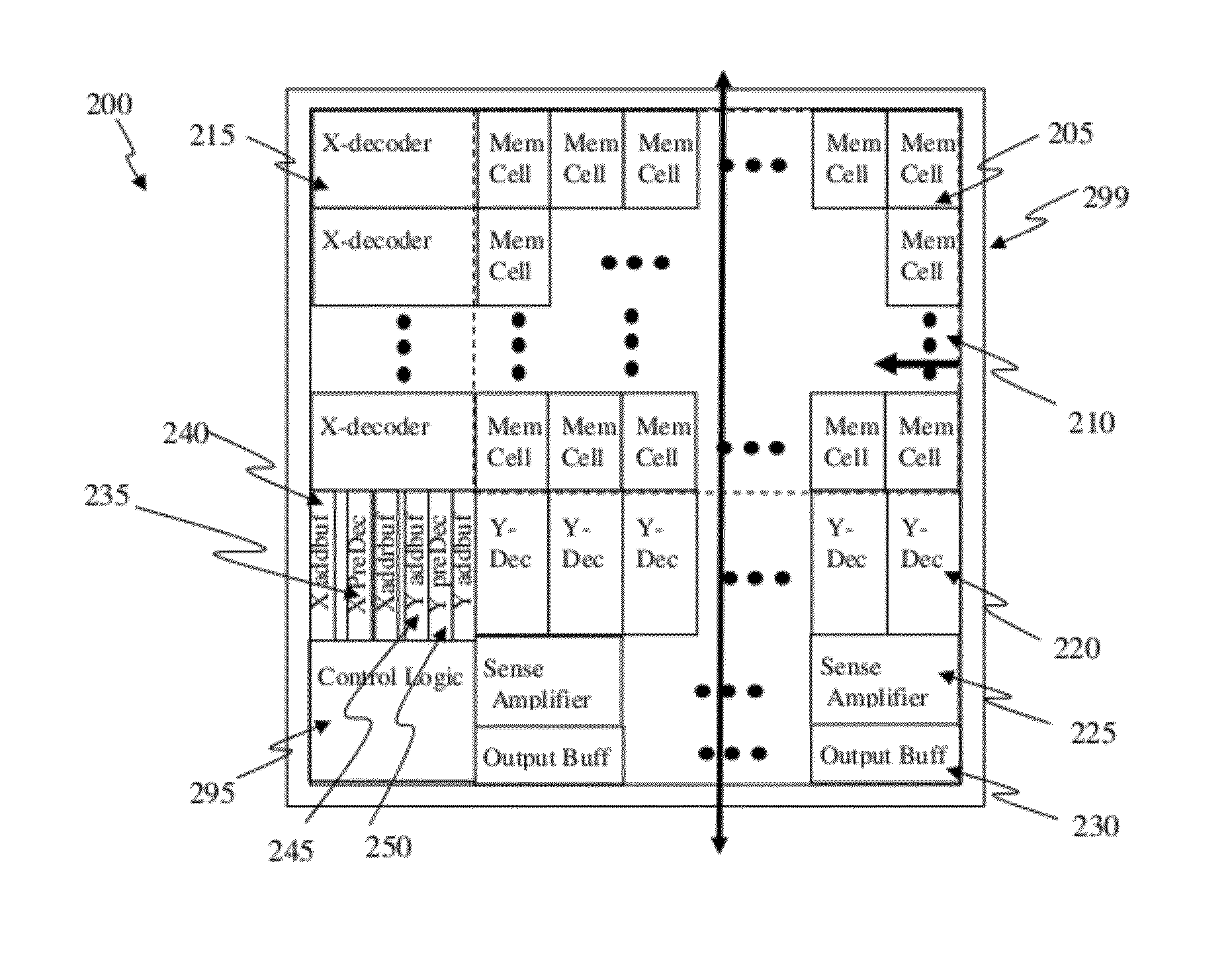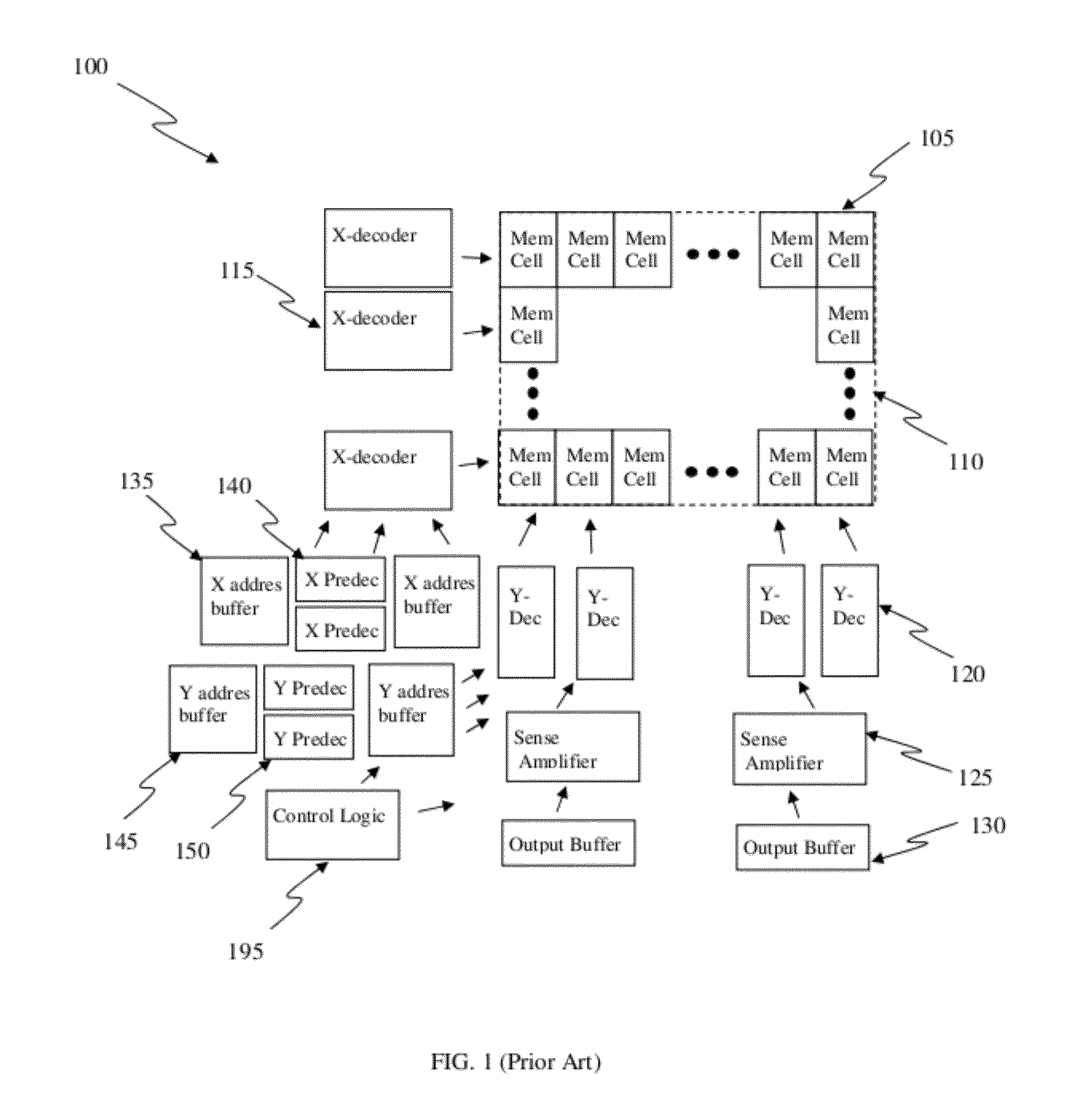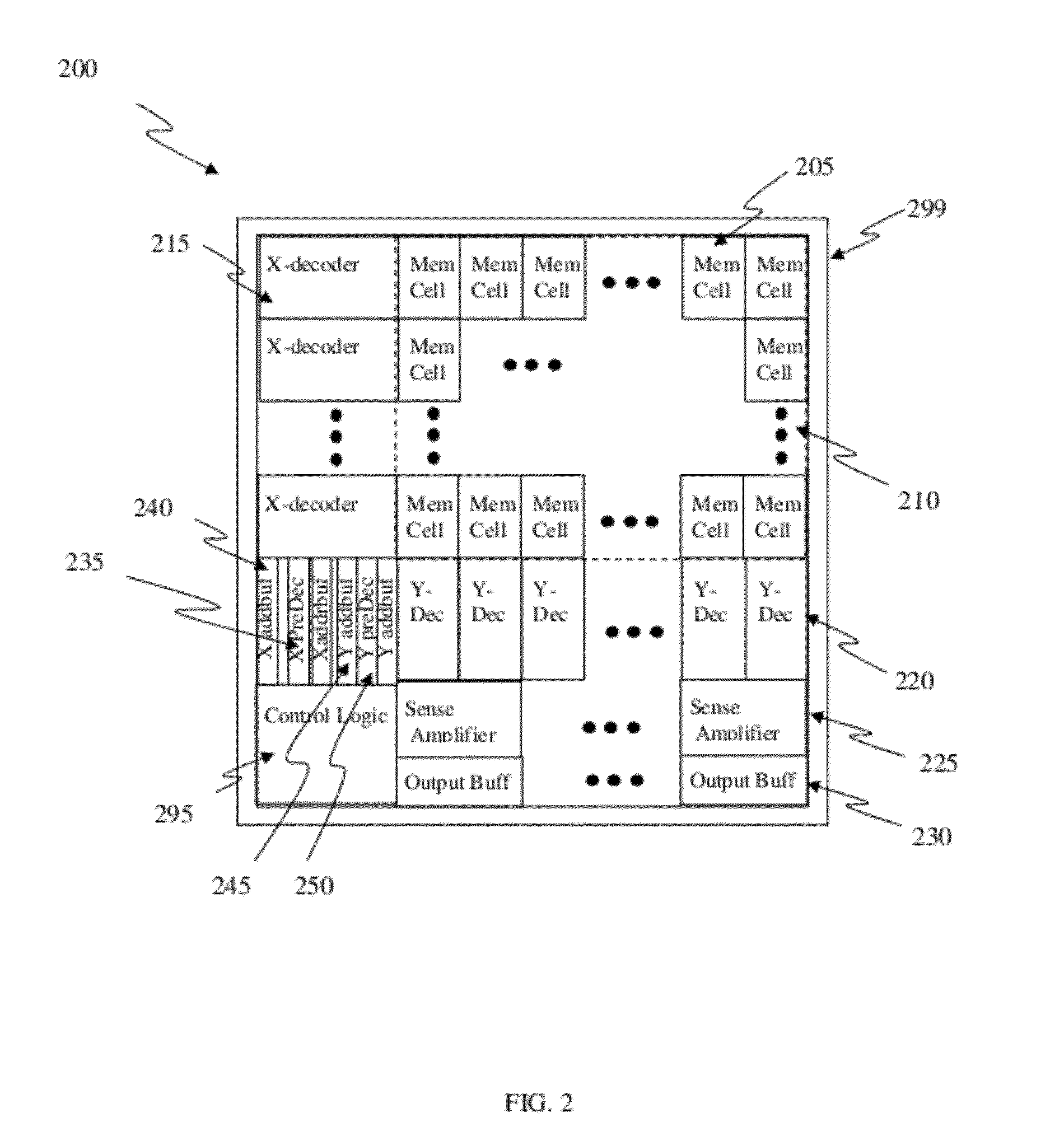Circuit and Method of a Memory Compiler Based on Subtraction Approach
- Summary
- Abstract
- Description
- Claims
- Application Information
AI Technical Summary
Benefits of technology
Problems solved by technology
Method used
Image
Examples
Embodiment Construction
[0040]This invention is about a memory compiler based on subtractive method that can be applied to any kinds of memory. By building a full-function memory with maximum capacity as a template, smaller size memories can be generated by reducing the memory array size and the associated tight-pitch cells accordingly. The memory macro boundary can also be stretched to fit into the new floor plan of the smaller memory. Some addresses would be disabled in the new and smaller size memories. This compiler method can be applied to any memories with more components and complicated circuits, though an OTP compiler is used as an example to illustrate the key concept of this invention.
[0041]FIG. 6(a) shows a layout floor plan of a memory 200. The memory 200 has an array of n×m memory cells 205 organized in a two-dimensional array 210. An array of n X-decoders 215 are placed and butted to the memory array 210 in the left. Another array of m Y-decoders 220 are placed and butted to the memory array ...
PUM
 Login to View More
Login to View More Abstract
Description
Claims
Application Information
 Login to View More
Login to View More - R&D
- Intellectual Property
- Life Sciences
- Materials
- Tech Scout
- Unparalleled Data Quality
- Higher Quality Content
- 60% Fewer Hallucinations
Browse by: Latest US Patents, China's latest patents, Technical Efficacy Thesaurus, Application Domain, Technology Topic, Popular Technical Reports.
© 2025 PatSnap. All rights reserved.Legal|Privacy policy|Modern Slavery Act Transparency Statement|Sitemap|About US| Contact US: help@patsnap.com



